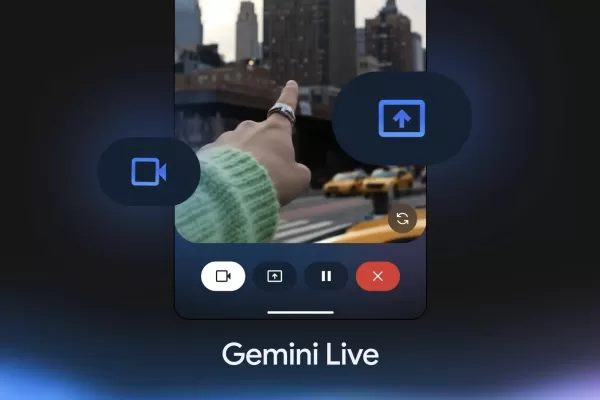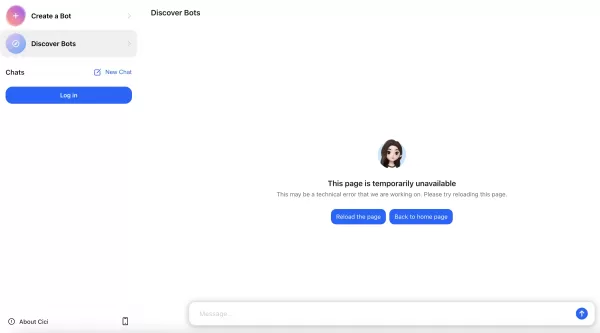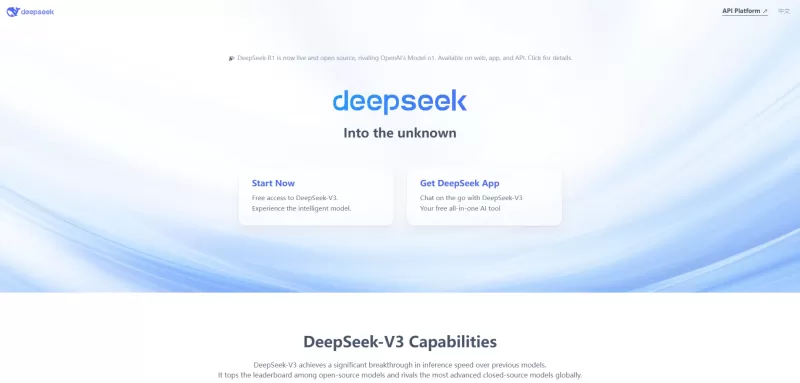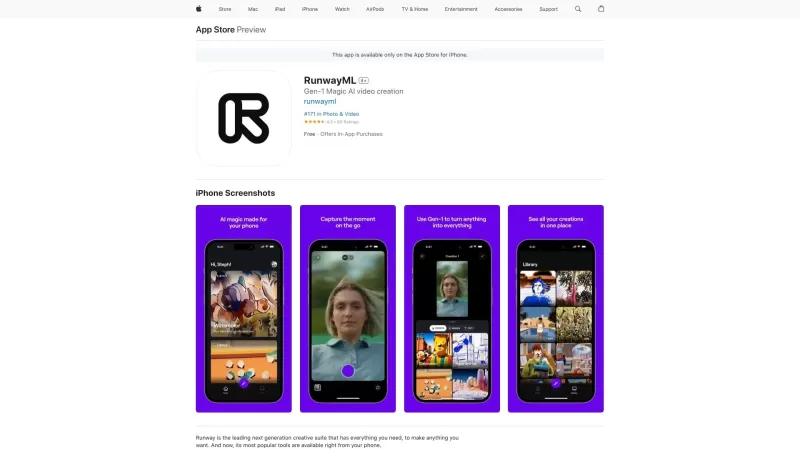Google Uses Pixel Phones and AI to Communicate with Dolphins in Delightful Video

Dolphins are renowned for their intelligence, and now, thanks to a groundbreaking AI model from Google paired with Pixel phones, researchers are on the brink of unlocking the secrets of dolphin communication—perhaps even talking to them someday!
Let's dive into how this fascinating project unfolds.
Interested in AI? Check out the top 20 AI tools - and don't forget the #1 thing to remember when using them.
Dolphin vocalizations are diverse and categorized into whistles, squawks, and clicking buzzes, each serving different purposes and behaviors. By dissecting these sounds, researchers can uncover patterns and structures reminiscent of human language.
The Wild Dolphin Project has been meticulously gathering data on dolphin language for nearly four decades. Their collaboration with Google introduces DolphinGemma, a new AI model that not only analyzes but can also predict the next sound in a sequence.
Enter the Pixel Phones
Google has tailored DolphinGemma to leverage specific audio technologies from Google. This integration with Pixel phones significantly reduces the reliance on specialized equipment, enhances system uptime, conserves energy, and slashes costs—key factors for field researchers.
Since DolphinGemma was designed with Pixel devices in mind, field researchers have been using a Pixel 6 to capture and analyze dolphin sounds underwater in real-time. This summer, they'll switch to a Pixel 9, capable of running both deep learning and template matching simultaneously.
The Ultimate Goal
As explained in a YouTube video, the aim is to decipher dolphin language, generate sounds dolphins might comprehend, and see if dolphins can mimic these sounds to perform tasks, thus understanding the context.
Recognizing the significance of this research, Google plans to release DolphinGemma as an open model this summer. Trained on Atlantic spotted dolphin sounds, it's still applicable to other species like bottlenose or spinner dolphins. By making these tools accessible to everyone, Google hopes to empower researchers globally to deepen our understanding of these brilliant creatures.
Want to stay updated on AI innovations? Subscribe to our Innovation newsletter for weekly insights.
Related article
 Google Introduces Real-Time AI Camera Sharing in Search
Google Expands AI-Powered "Live" Search Capabilities Across PlatformsAt today's I/O developer conference, Google unveiled expanded access to its innovative "Live" mode feature, enabling users to explore their surroundings through AI-powered visual se
Google Introduces Real-Time AI Camera Sharing in Search
Google Expands AI-Powered "Live" Search Capabilities Across PlatformsAt today's I/O developer conference, Google unveiled expanded access to its innovative "Live" mode feature, enabling users to explore their surroundings through AI-powered visual se
 Dell Launches Nvidia Blackwell-Powered AI Acceleration Platform
Dell Unveils Next-Gen AI Servers with Blackwell GPUs at Vegas EventAt Dell Technologies World in Las Vegas, the company unveiled its latest AI server lineup featuring Nvidia's cutting-edge Blackwell Ultra GPUs, marking a significant leap in enterpris
Dell Launches Nvidia Blackwell-Powered AI Acceleration Platform
Dell Unveils Next-Gen AI Servers with Blackwell GPUs at Vegas EventAt Dell Technologies World in Las Vegas, the company unveiled its latest AI server lineup featuring Nvidia's cutting-edge Blackwell Ultra GPUs, marking a significant leap in enterpris
 Cognition Acquires Windsurf, Maker of AI Coding Agent Devin
Cognition Acquires AI Coding Startup Windsurf Amid Industry Frenzy
Cognition, the AI startup responsible for the revolutionary coding assistant Devin, revealed plans to acquire Windsurf through a blog announcement on Monday. This strategic move come
Comments (4)
0/200
Cognition Acquires Windsurf, Maker of AI Coding Agent Devin
Cognition Acquires AI Coding Startup Windsurf Amid Industry Frenzy
Cognition, the AI startup responsible for the revolutionary coding assistant Devin, revealed plans to acquire Windsurf through a blog announcement on Monday. This strategic move come
Comments (4)
0/200
![PaulTaylor]() PaulTaylor
PaulTaylor
 August 25, 2025 at 11:01:14 AM EDT
August 25, 2025 at 11:01:14 AM EDT
This is wild! Google’s using AI and Pixel phones to chat with dolphins? I’m geeking out imagining a future where we’re just casually texting sea creatures. 🐬 Hope they don’t spam us with fish puns!


 0
0
![FrankClark]() FrankClark
FrankClark
 August 11, 2025 at 2:01:05 PM EDT
August 11, 2025 at 2:01:05 PM EDT
This is wild! Google using Pixel phones and AI to chat with dolphins? Imagine if we could actually understand what they’re saying—would dolphins spill some ocean gossip? 🐬 Super curious to see where this goes!


 0
0
![AnthonyPerez]() AnthonyPerez
AnthonyPerez
 July 27, 2025 at 9:18:39 PM EDT
July 27, 2025 at 9:18:39 PM EDT
This is wild! Google’s using Pixel phones to chat with dolphins? I wonder if we’ll get a dolphin translator app soon 🐬. Super cool, but I hope it respects their privacy!


 0
0
![DouglasRodriguez]() DouglasRodriguez
DouglasRodriguez
 July 23, 2025 at 12:59:47 AM EDT
July 23, 2025 at 12:59:47 AM EDT
This is wild! Google using Pixel phones to chat with dolphins via AI? Mind blown! 🐬 I wonder how far this can go—will we have dolphin Zoom calls next?


 0
0

Dolphins are renowned for their intelligence, and now, thanks to a groundbreaking AI model from Google paired with Pixel phones, researchers are on the brink of unlocking the secrets of dolphin communication—perhaps even talking to them someday!
Let's dive into how this fascinating project unfolds.
Interested in AI? Check out the top 20 AI tools - and don't forget the #1 thing to remember when using them.
Dolphin vocalizations are diverse and categorized into whistles, squawks, and clicking buzzes, each serving different purposes and behaviors. By dissecting these sounds, researchers can uncover patterns and structures reminiscent of human language.
The Wild Dolphin Project has been meticulously gathering data on dolphin language for nearly four decades. Their collaboration with Google introduces DolphinGemma, a new AI model that not only analyzes but can also predict the next sound in a sequence.
Enter the Pixel Phones
Google has tailored DolphinGemma to leverage specific audio technologies from Google. This integration with Pixel phones significantly reduces the reliance on specialized equipment, enhances system uptime, conserves energy, and slashes costs—key factors for field researchers.
Since DolphinGemma was designed with Pixel devices in mind, field researchers have been using a Pixel 6 to capture and analyze dolphin sounds underwater in real-time. This summer, they'll switch to a Pixel 9, capable of running both deep learning and template matching simultaneously.
The Ultimate Goal
As explained in a YouTube video, the aim is to decipher dolphin language, generate sounds dolphins might comprehend, and see if dolphins can mimic these sounds to perform tasks, thus understanding the context.
Recognizing the significance of this research, Google plans to release DolphinGemma as an open model this summer. Trained on Atlantic spotted dolphin sounds, it's still applicable to other species like bottlenose or spinner dolphins. By making these tools accessible to everyone, Google hopes to empower researchers globally to deepen our understanding of these brilliant creatures.
Want to stay updated on AI innovations? Subscribe to our Innovation newsletter for weekly insights.
 Google Introduces Real-Time AI Camera Sharing in Search
Google Expands AI-Powered "Live" Search Capabilities Across PlatformsAt today's I/O developer conference, Google unveiled expanded access to its innovative "Live" mode feature, enabling users to explore their surroundings through AI-powered visual se
Google Introduces Real-Time AI Camera Sharing in Search
Google Expands AI-Powered "Live" Search Capabilities Across PlatformsAt today's I/O developer conference, Google unveiled expanded access to its innovative "Live" mode feature, enabling users to explore their surroundings through AI-powered visual se
 Cognition Acquires Windsurf, Maker of AI Coding Agent Devin
Cognition Acquires AI Coding Startup Windsurf Amid Industry Frenzy
Cognition, the AI startup responsible for the revolutionary coding assistant Devin, revealed plans to acquire Windsurf through a blog announcement on Monday. This strategic move come
Cognition Acquires Windsurf, Maker of AI Coding Agent Devin
Cognition Acquires AI Coding Startup Windsurf Amid Industry Frenzy
Cognition, the AI startup responsible for the revolutionary coding assistant Devin, revealed plans to acquire Windsurf through a blog announcement on Monday. This strategic move come
 August 25, 2025 at 11:01:14 AM EDT
August 25, 2025 at 11:01:14 AM EDT
This is wild! Google’s using AI and Pixel phones to chat with dolphins? I’m geeking out imagining a future where we’re just casually texting sea creatures. 🐬 Hope they don’t spam us with fish puns!


 0
0
 August 11, 2025 at 2:01:05 PM EDT
August 11, 2025 at 2:01:05 PM EDT
This is wild! Google using Pixel phones and AI to chat with dolphins? Imagine if we could actually understand what they’re saying—would dolphins spill some ocean gossip? 🐬 Super curious to see where this goes!


 0
0
 July 27, 2025 at 9:18:39 PM EDT
July 27, 2025 at 9:18:39 PM EDT
This is wild! Google’s using Pixel phones to chat with dolphins? I wonder if we’ll get a dolphin translator app soon 🐬. Super cool, but I hope it respects their privacy!


 0
0
 July 23, 2025 at 12:59:47 AM EDT
July 23, 2025 at 12:59:47 AM EDT
This is wild! Google using Pixel phones to chat with dolphins via AI? Mind blown! 🐬 I wonder how far this can go—will we have dolphin Zoom calls next?


 0
0





























